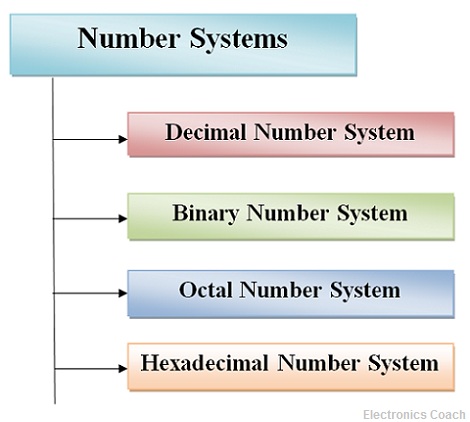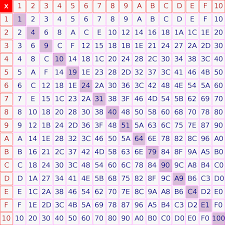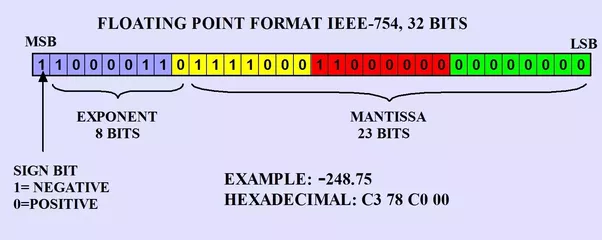Number Systems

Nada Fadul, Ronke Fashina, Bayat Ameha, and Cassandra Figueroa
Introduction to Number Systems
Every single value being saved or received from computer memory has a defined number system. Numeral systems are writing systems or mathematical notions that are used to express numbers in a given set, using digits or other symbols in a consistent manner. They are essential to computer system architecture. The types of number systems include decimal, binary, hexadecimal, and octal.
History
Approximately 4,000 to 5,000 years ago, the Babylonians adapted the first positional number systems from the Sumerians. In this number system, the value of a symbol depended on its position relative to other symbols. Today, we use the decimal system, which is also commonly referred to as the base 10 system. In the 6th or 7th century, the set of 10 Hindu-Arabic numerals originated, which represent the decimal number system. In the 12th century, the writings of Middle Eastern mathematicians, including Al-Khwarizmi and Al-Kindi helped introduce the decimal number system, and they paved the way for the development of algebra. In current times, we also use other types of number systems, including hexadecimal, binary, and octal number systems.
Binary Number System
The binary number system expresses in a base 2 numeral system, which uses 0s and 1s. The binary number system is crucial in our everyday life. Binary code expresses letters, digits, or characters using the binary number system in computers. Each space in a binary number will contain a one or zero and represents a powers of two. Binary was the first number system we had to master.We had to complete 4 tasks on the binary system. Once we began to get the hang of it, everyone had fun doing it. I think we can all agree that the following chart was the key to our success. . .

Hexadecimal Number System
The hexadecimal number system has 16 alphanumeric values from the numbers 0 to 9 as well as the letters A to F, where A=10, B=11, C=12, D=13, E=14, and F=15. The roots of "hexadecimal" are "hex" which means 6, and "dex" which means 10, and the base of the hexadecimal number system is 16.

Scientific Computing and Number Storage
Throughout the Girls Talk Math camp, we also conducted research and created a presentation about the use and importance of number systems in scientific computing. In the field of scientific computing, computers are used to perform extremely complex calculations will all different types of numbers, such as whole, negative, positive, and decimal numbers. In several widely-used computer languages, including C/C++, Python, and Java, the computer must be told what type of number is being used before the number is actually used, allowing the computer to understand how to read and store the number as well as perform calculations with it. Unfortunately, not all numbers all the way up to infinity can be stored, for computers hace a finite amount of storage. The largest number that can be stored on a computer depends on the number of bits that can be used.
Real World Applications of Number Systems

The binary number system is significant in the field of scientific computing because computers use bits, which are binary digits, in order to represent information in digital form. For instance, Internet Protocol version 4 (IPv4) network addresses consist of 32 bits or 4 bytes, which are transferred into binary codes. Additionally, a byte is simply a fixed-length sequence of bits. Modern computers organize data into bytes in order to increase the data processing efficiency of network equipment, disks, and memory. In our Numbers Systems group, my partners and I learned how to convert multiple IPv4 addresses from the binary number system into the decimal system and vice versa. For example, we encoded the address 192.168.0.1, which has values 192, 168, 0, and 1 for each of its bytes, into the binary code: 11000000 10101000 00000000 00000001.
Similarly, the hexadecimal number system is essential in the world or scientific computing and cybersecurity, for hexadecimal code is beneficial to protecting our wireless security keys as well as IPv6 network addresses. Hexadecimal numbering represents each group of 4 bits as 1 value. Wireless security keys, including WPA2, WPA, and WEP are sequences of letters and numbers commonly written in hexadecimal notation. IPv6 network addresses also commonly utilize hexadecimal code. During the Girls Talk Math camp, we converted several different wireless security keys from the decimal number system to the hexadecimal number system and vice versa.
Floating Point Representation
Finally, in order to encode all types of numbers, including positive, negative, and decimal numbers, computers use floating point representation. We learned that a float is the name for the 32 bit version of a floating point number, which is also commonly known as single precision. In a float, there are 3 different groupings of bits. The 1st bit is the sign of the number, the next 8 bits are the characteristic or exponent, and the last 23 bits are called the mantissa or significand. The characteristic is the binary encoding of the whole number, while the mantissa is the binary encoding of the fractional value.
We were also taught how to use and apply the floating point formula, which is (-1)^sign(2)^characteristic(1 + mantissa), when the mantissa, characteristic, and sign are known binary values. In general, floating point representation made us discover that mathematics is not always limited to plugging in numbers. While learning about floating point representation, we studied the importance of floating point representation. Without the floating point formula, we wouldn't be able to represent data on a computer, because the computer would not be able to interpret numbers.

Conclusion & Reflection
Despite facing several challenges throughout our experiences in Girls Talk Math, we were all able to join together and empower each other in order to overcome any obstacles. We are all so proud that we were able to learn so much about number systems, conversions, computer storage, data transfer, and real world applications of number systems in the field of scientific computing. Moving forward, we will continue to keep an open mind about pursuing a career that revolves around mathematics and computer science.
